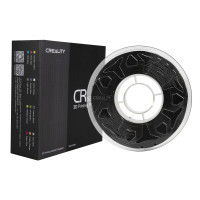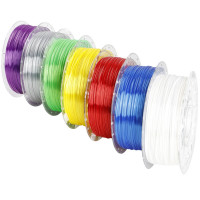3D printer filament - what is that anyway?
Roughly speaking, filament is a common generic term for all plastics (thermoplastics) that are used to create 3D printed objects within an additive printing process called FDM printing.
When you order filament for home use, it is usually delivered on a roll. The filament rests on this roll in the form of a thread, which can be unthreaded from the roll without much effort, even during longer printing processes, without becoming knotted.
Before the actual printing process, this fine filament thread is inserted into the hotend, i.e. the heated print head of the 3D printer. There, it is heated to the melting temperature during the printing process and deposited in layers onto the printer's heated bed. This process is also known as "extruding."
That sounds exciting, doesn't it? But you don't have a 3D printer at home yet? Then it's high time you did, because with a 3D printer you're absolutely on trend right now!
The advantage is obvious: The layer printing process allows you to print models that are precisely tailored to your individual needs. Whether it's a socket for the toolbox, a holder for the car radio or a cutlery tray - you decide what gets printed.
Which filament is suitable for my 3D printer object?
Not every filament is the same, and that's a good thing, because the material requirements of a 3D printed object can vary depending on the application. For example, if you want to print a wrench, it is recommended to use a particularly robust filament like nylon. If you are planning to print a cell phone case, the use of a flexible filament is obvious.
The diameter of the filament also plays an important role in the selection. The commercially available 3D printers are designed for 1.75mm filament ex works, but can also be converted to 2.85mm filament. Before buying, we recommend checking which filament your 3D printer is designed for.
As a small help, you will find a small description text in each filament category, which summarizes the most important properties of the respective filament. If you still need support in choosing the right filament, you are of course welcome to contact us!





